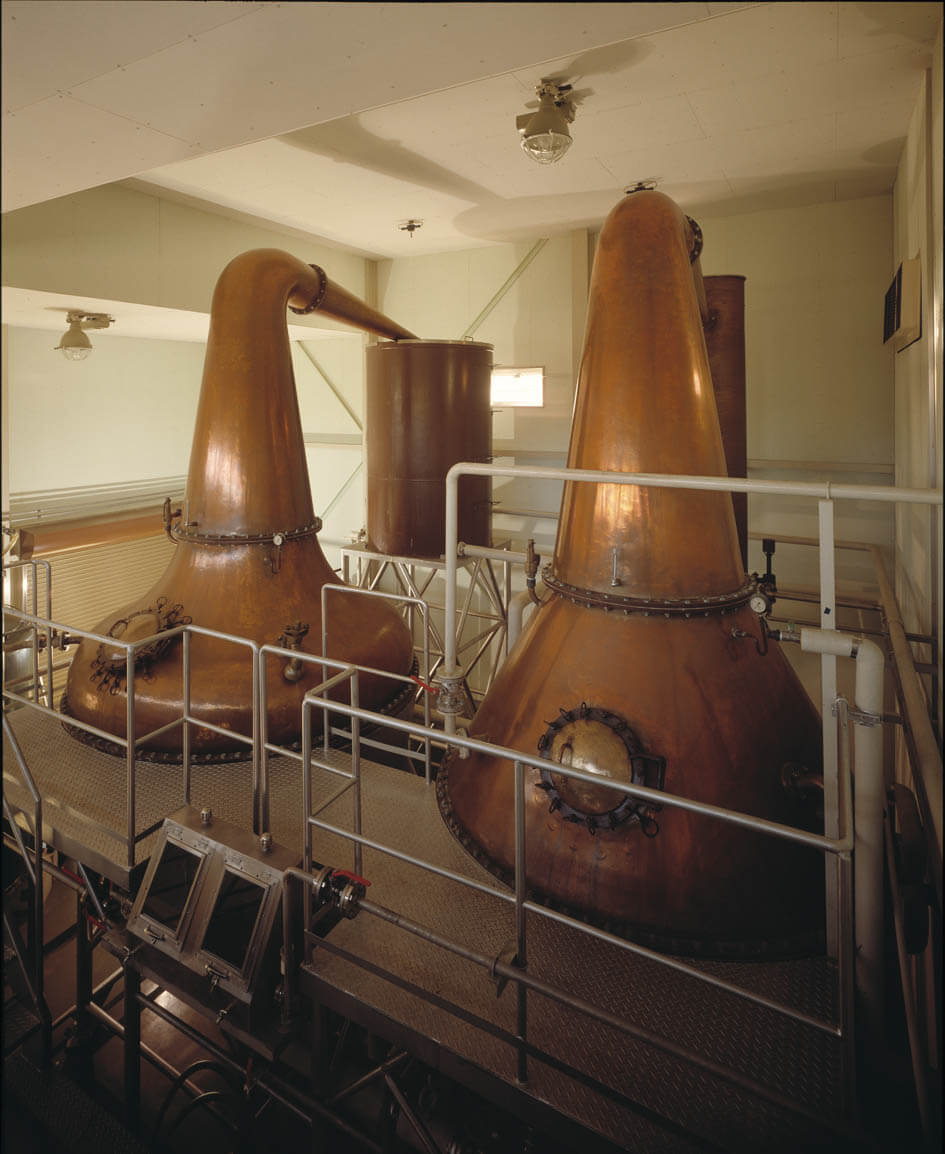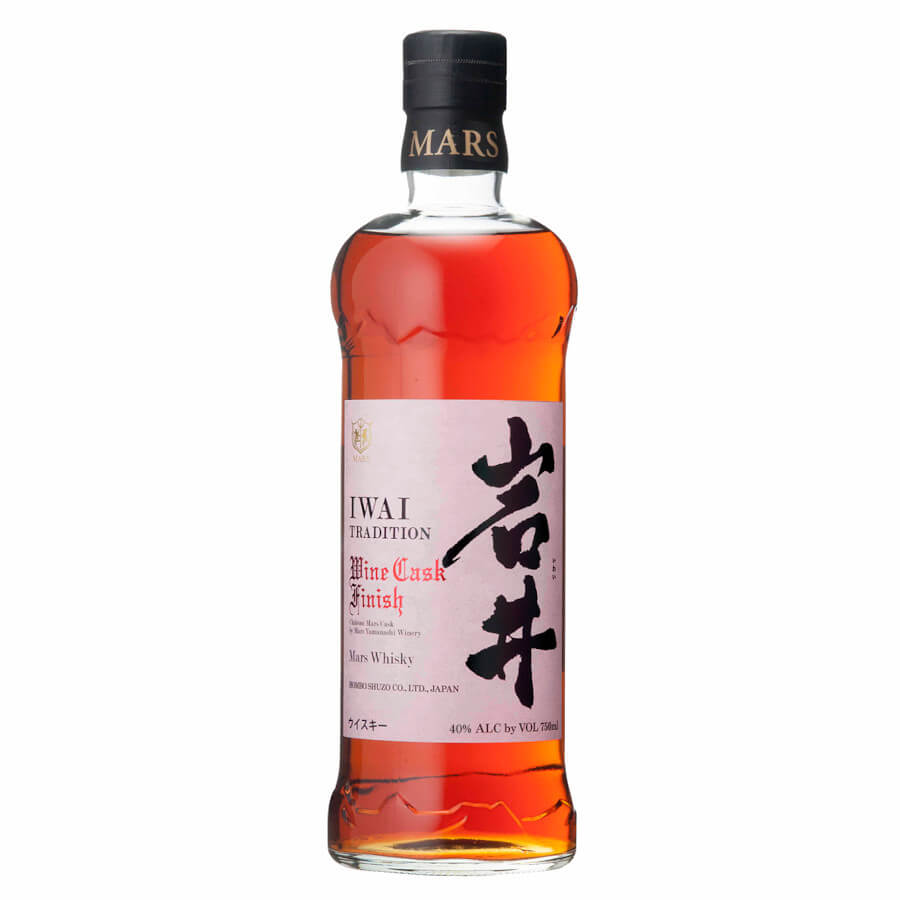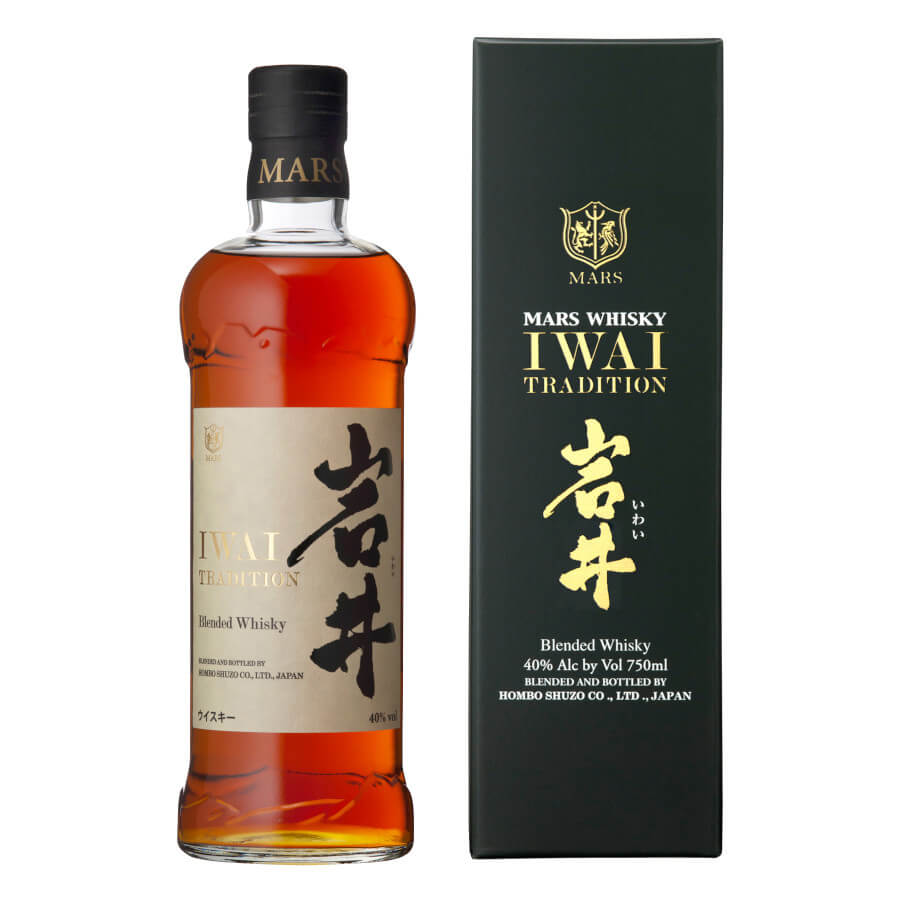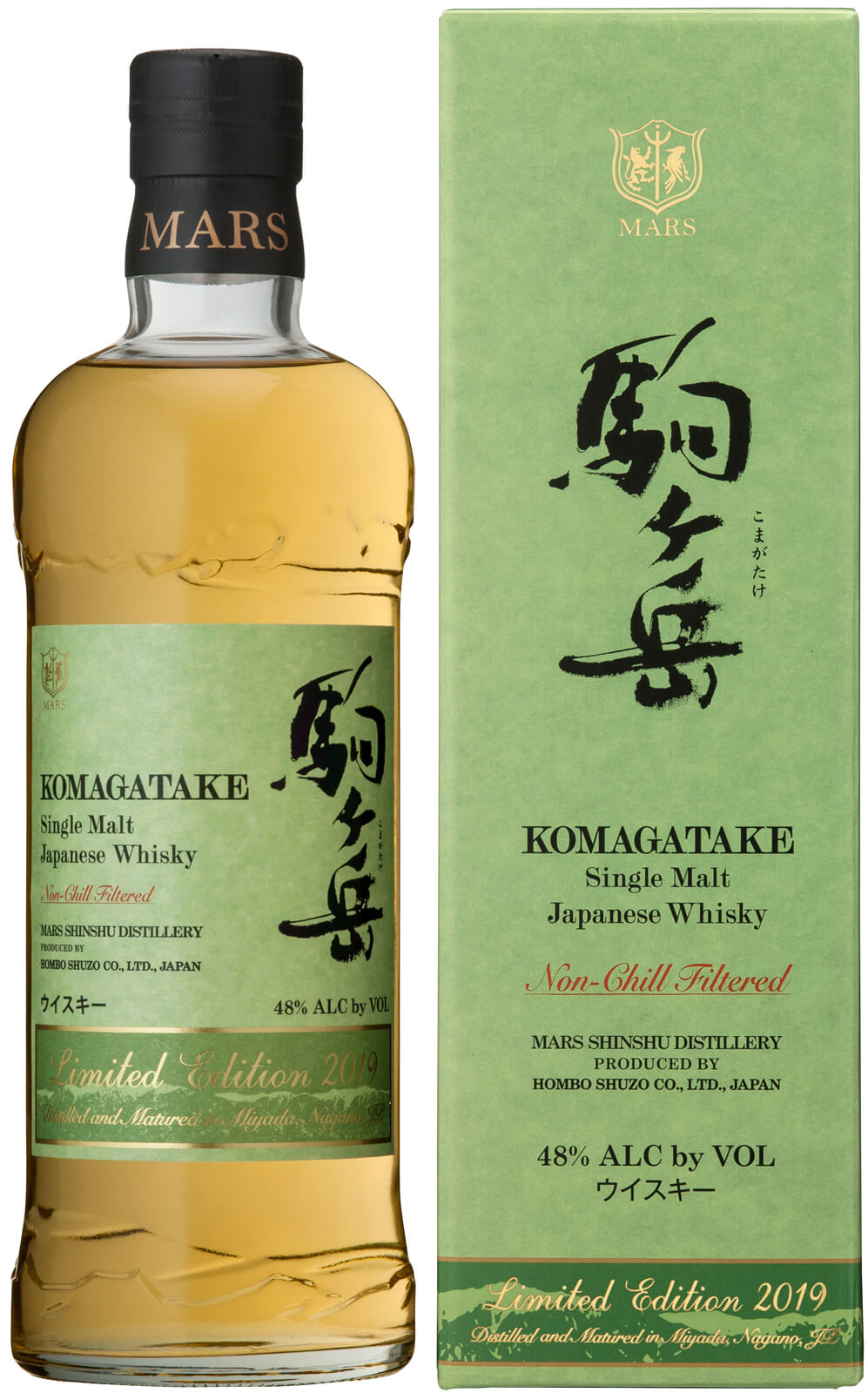by Ken Gargett
When we looked at the wonderful whiskies of Ichiro Akuto at Chichibu, I mentioned that in his magnificent book on Japanese whisky, The Way of Whisky, Dave Broom devoted an entire chapter to those fabulous spirits. Few producers were so honored. We don’t have to go quite as far as Mars to find another, but it is a clue. Broom allocated an entire chapter to the whiskies of Mars Shinshu.
Mars Shinshu is three hours’ drive northwest from Tokyo toward the southern Alps. At an altitude of 800 meters it is the highest distillery in Japan.
Why is it called Mars? The parent company, Hombo Shuzo Co. Ltd, decided to hold a competition to name the new distillery. It already owned a Shochu (a Japanese drink that can be distilled from rice, sweet potatoes, barley, buckwheat, or seemingly any number of other items) called Star Treasury, so the suggestion that the new plant be called “Mars” seemed reasonable.
It stuck (and won). Since then, the name seems to have bounced around between Mars, Shinshu, and Mars Shinshu. Shinshu pertains to regionality.

Mars Shinshu whisky distillery in Japan
Mars Shinshu history and distilleries
The distillery was established in this distant locale largely thanks to the quality of the water. Broom calls it “rock-polished, softened, and abundant.” It registers as water with low minerality. The temperature is also crucial, ranging from summer highs of 30°C to winter lows of -10°C. There are also significant diurnal changes during summers, which are short; winters are long.
Conventional wisdom has Japanese whisky beginning when Shinjiro Torii and distiller Masataka Taketsuru (known as the forefathers of Suntory and Nikka) went to Scotland in 1920 to learn the craft.
Taketsuru was sent by Kijiro Iwai from the firm of Settsu Shozu, and it was to him that Taketsuru returned with his report. Unfortunately Settsu Shozu had collapsed by this stage, and Taketsuru eventually joined Torii at Yamasaki. Iwai might have been a behind-the-scenes operator, but his contributions did not slip under the radar. He was named in the top 100 most influential people in the history of whisky, one of only four Japanese to be so honored.
Several decades later, in 1960, Iwai’s son-in-law, then in charge of Hombo, began whisky distillation in the Yamanashi region (the family had first taken out a license in 1949 but it was a decade before production began – in the interim, they simply blended grain and malt for other producers).
Despite Iwai’s expertise and Taketsuru’s report, used by Iwai to design Mars’ first stills by 1969, it also collapsed. The early whiskies were considered too heavy and too smoky for the local palate.
Nine years later, Hombo had another crack at it, making very small amounts of whisky in tiny stills – it was in effect a micro-distillery. In 1985, the original Yamanashi stills were taken to the Mars site, but with the local lack of interest in whisky in those days and the doubling of taxes, by 1992 there was, yet again, a closure, via a move to distilling brandy. The style of whisky from the new site was much lighter and found fans, but, alas, it was not to be.
In 2011, it was up and running again, the explosion of interest in Japanese whisky assisting this revival, but one wonders just how confident they were given every previous attempt at genesis was followed by a seemingly inevitable terminus. Current manager of the distillery is Koki Takehira.
Just as we have seen the revival of ghost distilleries in Scotland – distilleries that have long since disappeared, but whose whiskies had occasionally been left to mature for sometimes decades, although demand is seeing these stocks heading to extinction – so too has it happened in Japan. And so far, so good!
Takehira was originally a brewer and has allowed that experience to influence his style of whiskies. These are early days, particularly when compared to the centuries of experience enjoyed by Scottish distilleries, and Takehira is still working to establish the house style.
“Searching for its soul,” he calls it, and off to a wonderful start. At this stage, the whiskies appear to be from the elegant and complex end of the spectrum, and there is a gentle sweetness, more so than found in most Japanese whiskies. Mars Shinshu has talked of heavily peated styles, but that has not really emerged from any of the whiskies I have seen as yet.
These things take time.

Whisky stills at the Mars Shinshu distillery in Japan
Takehira is experimenting with the location (and altitude) of the casks used for aging, given that different conditions with humidity and temperature provide varying results. In doing this, Mars Shinshu built a facility for aging whiskies on the tiny island of Yakushima, a World Heritage site – whiskies from both of the distilleries are aged here.
It should be noted that Yakushima is not a World Heritage site because of its contribution to whisky aging, but because there is a meeting of the Palearctic and oriental biotic regions, which leads to a rich flora with some 1,900 species/subspecies, including the ancient sugi, a Japanese cedar, and remnants of a unique warm-temperate ancient forest.
The experimentation extends to different yeasts and also malts. In other words, these whiskies are very much a work in process, but at all times keeping the legacy of Iwai in mind.
In 2016, a second distillery, the Tsunuki Distillery, was opened in Kagoshima. This more southerly location, indeed the southernmost distillery in Japan, is a return to the heavier malts and richer whiskies, a style that is very much associated with Kijiro Iwai. Between them, they are producing a wide range of whiskies, though at this stage, still of limited production.
Tasting notes: Mars Shinshu whiskies
Iwai Tradition Wine Cask Finish Whisky
Blended in the same spirit as the Isai Tradition Blended Whisky below but aged in casks formerly used for Cabernet Sauvignon (I understand Pinot Noir casks are also occasionally used).

Iwai Tradition Wine Cask Finish Whisky
The color is very dark and there is a malty treacle note with a hint of chocolate and honey. Complex and concentrated. Finely focused. Florals, dark cherry, and even a hint of orange blossom. There is underlying power here. Excellent length. A terrific whisky with excellent length and good texture. A long clean finish. 92.
40 percent. AUD$125.
Iwai Tradition Blended Whisky
A pot-still blended whisky with a bronzed honey color. Aged in a mix of sherry casks, bourbon casks, American white oak, and Japanese Mizunara casks.

Iwai Tradition Blended Whisky
Florals with orange rind notes. An old oak character. A firm finish with very good length and balance throughout. Spices, even the appearance of a hint of white pepper. A touch of ginger. This has a lighter texture but there is still richness to be found here. 90.
40 percent. AUD$110.
Komagatake Single Malt Limited Edition 2019 Whisky
Komagatake refers to the local mountains. A Limited Edition, the number of bottles not confirmed but believed to be in the vicinity of 10,000. Non-chill filtered. Aged for four to six years – remember that it is early days for this distillery, and it is almost humbling to think what these guys will be doing in another decade or two with more aged material.

Komagatake Single Malt Limited Edition 2019 Whisky
It is selected from barrels aged on the top shelf of the rack house at the Shinshu Distillery as it is considered that this is where maturation happens quickest. A pale yellow/gold. Brilliantly complex with that gentle sweetness. Florals, spice, lemon blossoms, and stone fruit. There is a sea breeze/oyster shell note. Fire and ice. Length is fabulous and there is an appealing softness. This is a wonderful whisky. 94.
48 percent. AUD$280.
You may also enjoy:
Chichibu Whisky: The Japanese Version Of Pappy Van Winkle
Yamazaki 12-Year-Old Japanese Whisky: Why Pricing Has Gone Through The Roof
For The Sake Of Sake: A Primer With Tasting Notes
Grand Seiko Elegance SBGW263 And SBGW264: Using The Principles Of Japanese Aesthetics
Koma Kurabe: The Slim d’Hermès With Authentic Japanese Porcelain Enamel Dial





















































Leave a Reply
Want to join the discussion?Feel free to contribute!